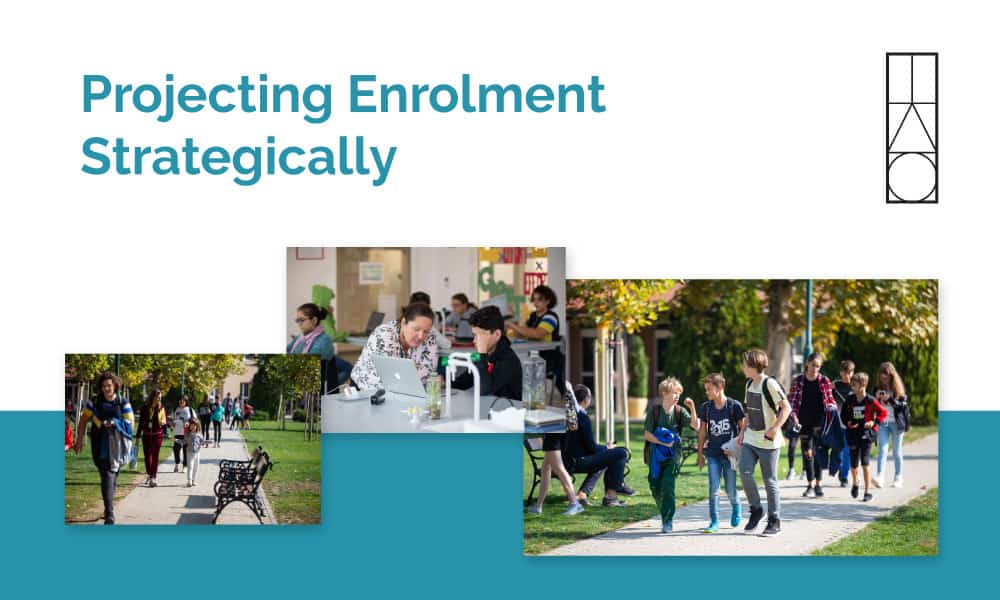Projecting enrolment is probably one of the most important functions of an Admissions Manager. It is one of the main functions of his/her strategic role and it affects the way school budgets are built, new staff are hired and facilities evolve.
Over my almost two decades at AIS Bucharest, I have tried a variety of ways to project enrolment and some have been more successful than others. Over the past five years I have settled on a way that provides me with the best possible educated guess – for there is a “crystal ball” element to this process, as I am sure all of you can agree!
Below are three key elements that I use when I build my projections in February of every year:
1. Know the data
This is not just talking about numbers. This refers to knowing about the families in the school. It is easier for me than some, because I hold both the admissions and external relations hats and I am involved in parent relations. I know who is leaving, who is thinking of leaving, the families who are struggling, the ones who love it at AISB and the ones who are looking around for another option because they are displeased. If your contact to the parent community is a different person than the one doing projections, it is then of utmost importance that they become your new best friend while you create an estimate of families who will return, might return or will most likely leave.
2. Know the background
Private, international schools have always been and will always be heavily impacted by the economic developments of the country or region they reside in. Our Board of Trustees is supported by a group of expert parents who act as advisors. They brief them on how the economy is faring; giving insight into important industries, banks, HR trends, legal system changes and so on. We are therefore able to stay connected to what is happening at the highest level. Even if you, as the Admissions Manager, don’t have a seat at the Board table that often and sometimes not even at the leadership table, you can still pay attention to the media and cherry pick information that may impact your parent community and school. For example, is a large group of your families supported by the oil industry? Pay attention to what is going on in that area. Stay in touch with the HR and relocation offices and pick their brains whenever you can (though many times they may not wish to share information, for strategic reasons).
3. Collect data and use it
My enrolment reports date back to 2003. And while, with differing Heads and perspectives, as well as interests, some of the numbers are reflected in a different way, I can fall back on some of my previous numbers to estimate how many applications I will receive from February (or whatever point in the year you use to project enrolment for the following one) until August (school start). It is not an exact science, but at least it gives me some idea.
Below is a suggested four step process to put everything mentioned in place and show probably one of the most tailored projections for your school.
Step 1: Look at each family in your school and, knowing what you know about them, as well as taking into consideration the factors below, estimate their return. Ask yourself questions like these:
- Are they locals or expats? – Locals are likely to stay.
- Do they have a student going into 12th grade? – If they do, they are likely to stay.
- If they are expat, have they been with you for over 3 years? – Likely to go.
- Are they enrolling younger children? – That is a clear sign they are staying.
- Do you know from them that they are leaving? – Clearly a no return.
Step 2: Now that you have a guesstimate about those returning and those likely to return, include the numbers that you can see coming in. Add the newly admitted for the following year, new applicants and waitlisted (if this is your case).
Step 3: Look at the newly created totals and compare them with your class level limits. Can you take this number of students? Do you need to create additional sections or cut some? This is the point when you sit down with your leadership team and figure out the best scenarios.
Step 4: Estimating the number of applications you are to receive from the moment of projecting until the beginning of the school year is probably the hardest part and the time when you do your most guesswork.
Over the years I have looked at grades from year to year and generationally and created averages. My advice would be to never look at numbers in isolation – remember that those numbers are kids, who have families and look at what happens around the world and in your country to estimate as best you can. Some factors that may influence new numbers coming in are:
- Companies changing their benefits packages (not sponsoring kids under 5 years old for example)
- New schools opening around you
- Various world situations that occur and shift your numbers
Even when you consider all of the above, projecting still looks like trying to ask a crystal ball how many students you will have in the new year. Add to everything above firm deadlines for your re-enrolment contracts and follow up on that strategically (contact parents who are keeping spaces in grades filling up first); make sure your admissions process is working swiftly so you can capitalize on each and every application in time, so as not to lose the families.
The strategic role of admissions is seen most of all in projections and this is your moment to help your leadership create a picture about the future that is as close to reality as possible. Keep connected to all the factors above and report continuously if your projections need to be revisited.
How do you know if you were right or wrong? Well … check how many ’bums in the seats’ you have at the beginning of the year and reflect on what happened that was as you predicted and what was different. Hopefully, that will educate you better for the year to come.
Enrolment projections in the time of COVID-19
If knowing your community was ever important, that time is now. I dare say that schools which lack intimate knowledge about what the numbers in their reports mean, have suffered or will suffer greatly. In Bucharest, we took a 10% dip in an enrolment which looked to be booming before March 2020, when our school closed due to the outbreak of COVID 19. As soon as people understood that COVID-19 was here to stay, my discussions with parents intensified as I was trying hard to gather who is staying and who is going.
While our withdrawal rate remained steady, the pipeline of new applicants dried almost instantly and that was predictable, given the “stay in place” orders everywhere. If crystal balling was something that projections looked like before the pandemic, we may be tempted to drop this sport altogether now that things are so uncertain. We cannot do that however: more than in any other time in the lives of our schools, enrolment management and enrolment projections ensure the lifeline of the institution.
Here are a few tips to use to keep your leadership team updated with what is going on.
- Report more often and provide a minimum, medium and maximum scenario
- For your projections to be realistic, make sure you talk to your Principals to understand what class numbers look like given reopening plans in the time of the pandemic. In Bucharest, for example, class numbers have gone down due to regulations we have to follow in terms of how many students we can have in class, with physical distancing.
- Keep in touch with parents and your Finance Office to understand details which can make a difference in your numbers: who has not paid, who has been fired, what companies are declining payments.
- Keep an eye on the economic situation in the country you are in – if you have a majority of students coming to you from the oil industry, from the travel industry or other such hard hit areas, beware about how this will influence your projections.
















 All Services
All Services


